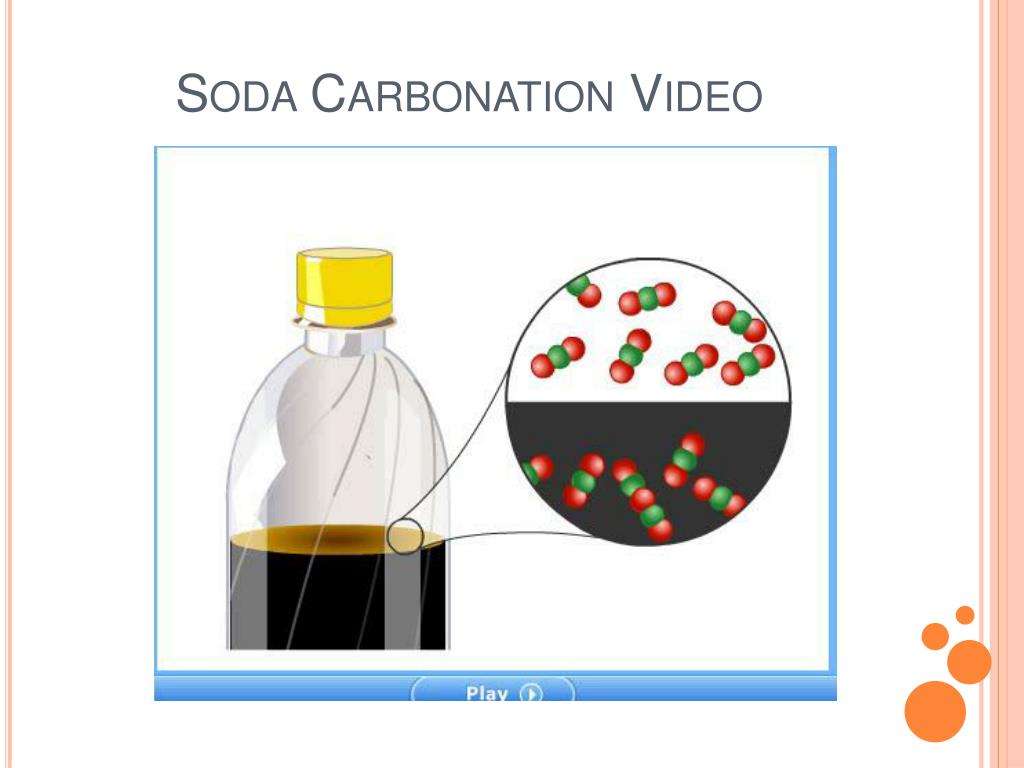When it comes to drinking soda, there are several factors that come into play, including taste, brand, and carbonation levels. Carbon dioxide is the gas that gives soda its characteristic fizziness and is added during the manufacturing process. The carbonation levels in soda can vary from brand to brand and even within the same brand, depending on factors such as packaging, temperature, and altitude. In this article, we’ll take a closer look at carbonation levels in soda and how they affect your drinking experience.
What is Carbonation?
Carbonation is the process of dissolving carbon dioxide gas in a liquid. When carbon dioxide is added to water, it forms carbonic acid, which gives the water its characteristic tangy taste. Carbonation is commonly used in the production of beer, champagne, and soda. It can also occur naturally in certain mineral springs.
How is Carbonation Measured?

Carbonation levels in soda are typically measured using a carbonation meter, which measures the amount of carbon dioxide in the liquid. The most common unit of measurement is volumes of CO2 (VCO2), which represents the number of volumes of carbon dioxide gas that are dissolved in one volume of liquid. For example, a soda with a carbonation level of 2.5 VCO2 means that there are 2.5 volumes of carbon dioxide gas dissolved in one volume of liquid.
What are the Different Carbonation Levels in Soda?

Carbonation levels in soda can vary widely, from as low as 1.5 VCO2 to as high as 4.0 VCO2. Most sodas fall somewhere in the middle, with carbonation levels ranging from 2.5 to 3.0 VCO2. The carbonation level of a soda can have a significant impact on its taste and mouthfeel, as well as its perceived sweetness.
What Affects Carbonation Levels in Soda?

There are several factors that can affect the carbonation levels in soda, including:
- Temperature: The colder the soda, the more carbon dioxide it can hold, which can increase its carbonation level.
- Altitude: At higher altitudes, the atmospheric pressure is lower, which can cause the carbon dioxide in soda to expand and escape more quickly, resulting in a lower carbonation level.
- Storage: If soda is stored in a warm environment, the carbon dioxide can escape more quickly, resulting in a lower carbonation level.
- Shaking: If soda is shaken or agitated, the carbon dioxide can escape more quickly, resulting in a lower carbonation level.
Why Do Some Sodas Lose Their Carbonation Over Time?
Over time, sodas can lose their carbonation for several reasons, including:
- Exposure to air: When soda is opened, the carbon dioxide gas can escape more quickly due to exposure to air, resulting in a lower carbonation level.
- Temperature: If soda is stored in a warm environment, the carbon dioxide can escape more quickly, resulting in a lower carbonation level.
- Age: The longer soda sits on the shelf, the more carbon dioxide it can lose, resulting in a lower carbonation level.
How Do Carbonation Levels Affect the Taste of Soda?

The carbonation level of a soda can have a significant impact on its taste and mouthfeel. Sodas with higher carbonation levels tend to have a sharper, more intense taste, while sodas with lower carbonation levels can taste flatter and less refreshing. The level of carbonation can also affect the sweetness of the soda, with higher carbonation levels making the soda taste less sweet and lower carbonation levels making it taste sweeter.
What is the Best Carbonation Level for Soda?

The best carbonation level for soda is largely a matter of personal preference. Some people prefer sodas with higher carbonation levels, while others prefer sodas with lower carbonation levels. The type of soda can also play a role, with some sodas, such as root beer and cream soda, being better suited to lower carbonation levels. Ultimately, the best way to find your preferred carbonation level is to experiment with different brands and types of soda.
Conclusion
Carbonation levels in soda can vary widely and can have a significant impact on the taste and mouthfeel of the soda. Factors such as temperature, altitude, and storage can affect carbonation levels, and sodas can lose their carbonation over time due to exposure to air and age. The best carbonation level for soda is largely a matter of personal preference, and the best way to find your preferred carbonation level is to experiment with different brands and types of soda.